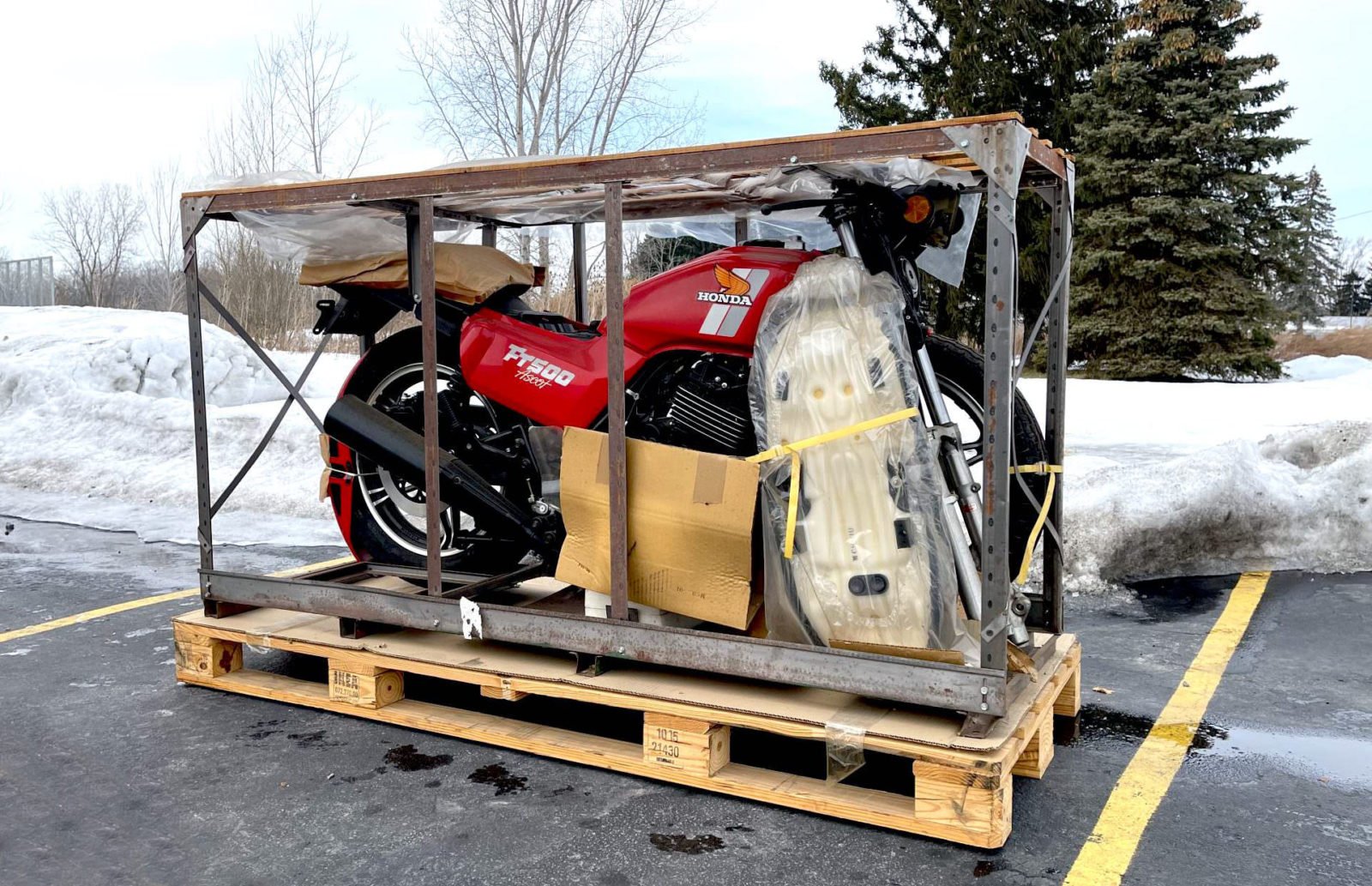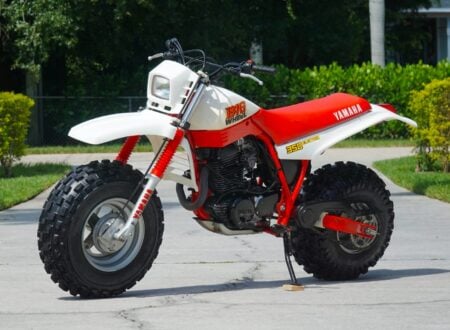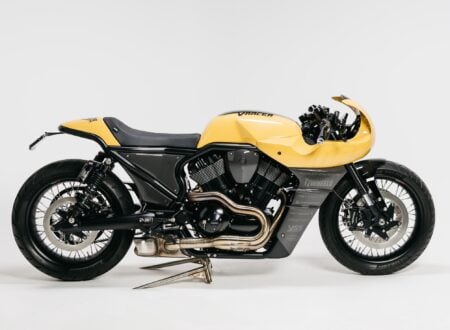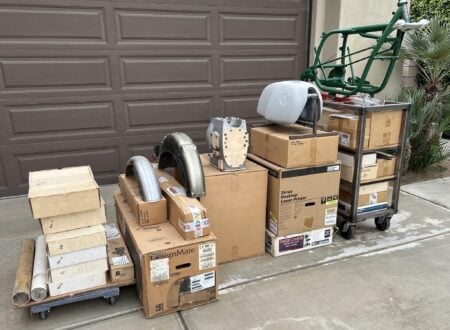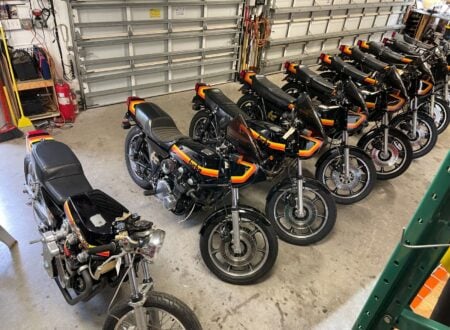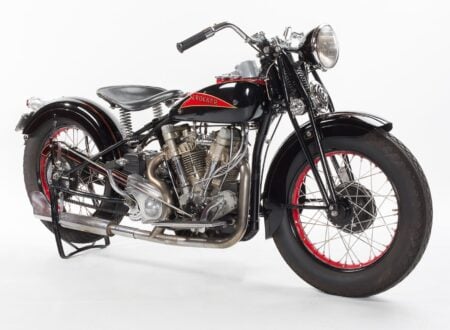This 1982 Honda FT500 Ascot that has remained in its factory crate since it was delivered to Northline Motorcycles of Houston, Texas. The bike never sold and it was never uncrated, so it now presents a unique opportunity to buy an FT500 in time capsule condition.
The Honda FT500 was developed as a competitor for the popular Yamaha SR500, it was powered by a modified version of the Honda XR500 dirt bike engine, and given styling to evoke the flat track race bikes of the time.
Fast Facts – The Honda FT500 Ascot
- The Honda FT500 Ascot was released in 1982 and sold for just two years, ending production a year later in 1983. It was followed by the V-twin Honda VT500FT which was sold in 1983 and 1984.
- Though the Honda FT500 Ascot wasn’t a success for the Japanese motorcycle marque at the time, it has become a cult classic in recent years and remains popular with people looking for a reliable retro thumper for urban transportation duties.
- With a modified version of the Honda XR500 dirt bike engine, the FT500 was developed for street use and named “Ascot” in the United States after the famous Californian flat track circuit. The “FT” in the name stands for “Flat Track.”
- The Honda FT500 Ascot is powered by a 498cc single-cylinder, four-stroke, air-cooled engine with a single overhead cam and four valves. It produces 33 bhp at 6,500 rpm with 29 lb ft of torque and it weighs 375 lbs (171 kgs).
The Honda v Yamaha Rivalry
When Yamaha unveiled the XT500 in 1975 it would prove to be one of the most important dual sport motorcycles of the decade, if not of all time.


It won the first two runnings of the Paris-Dakar Rally in 1979 and 1980 as well as the Paris–Abidjan-Nice Rally, it even won the 1977 500cc Luxembourg Grand Prix against the faster-on-paper two-stroke competition with Bengt Åberg in the saddle.
The popularity of the Yamaha XT500 was a boon for the Japanese motorcycle manufacturer, but they needed a way of cashing in on the popularity of the dual-sport bike with those just looking for a regular street bike for urban transportation.
This led to the release of the Yamaha SR500 in 1978, a street focussed motorcycle with a modified version of the single-cylinder engine from the XT500.
Honda was paying close attention to what Yamaha was up to. Honda had created the modern superbike and the Universal Japanese Motorcycle in one fell swoop with the introduction of the Honda CB750 in 1969, but by the late 1970s they were starting to fall behind.
They released the Honda XR500 in 1979, it was aimed squarely at the Yamaha XT500 and on paper at least, it was the superior bike producing 41 bhp vs the 32 bhp of the Yamaha – thanks in part to its four-valve architecture compared to the Yamaha’s two.
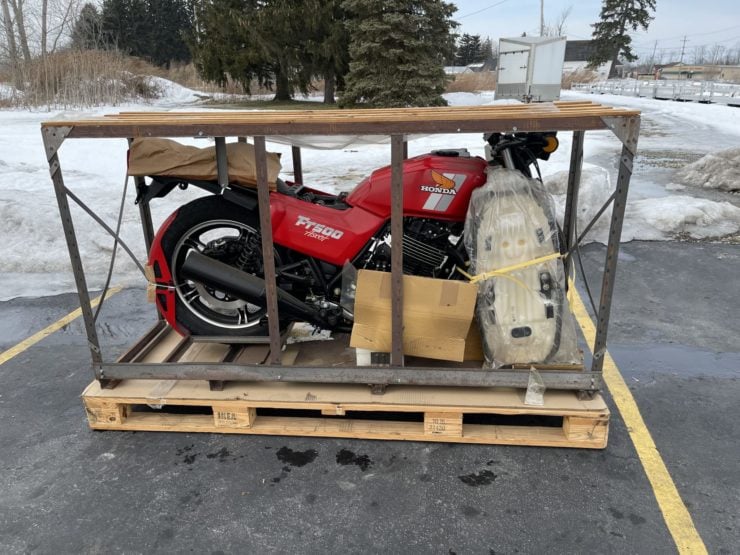

The Honda XR500 proved popular and sold well, a whole family of XR motorcycles was developed and in 1982 Honda took aim at the Yamaha SR500, they released the Honda FT500 Ascot – a street motorcycle that used the engine from their 500cc enduro thumper.
The Honda FT500 Ascot
Honda likely had high hopes for the FT500 Ascot when it was released in 1982, they had worked to ensure that it was a technologically superior motorcycle to the Yamaha SR500 in essentially every way.
A modified version of the engine from the Honda XR500 was used, a 498cc single-cylinder, four-stroke, air-cooled engine with a single overhead cam and four valves with a balance shaft to help tame the vibrations inherent to single-cylinder engine design.
Power was sent to the rear wheels via a 5-speed transmission, the bike was fitted with front and rear disc brakes, a Keihin carburetor, an electronic ignition, alloy wheels, and adjustable front and rear suspension.
The Ascot wasn’t overly powerful, producing 33 bhp at 6,500 rpm with 29 lb ft of torque, but it was more than adequate for its purpose and perhaps most importantly it was more powerful than the SR500.
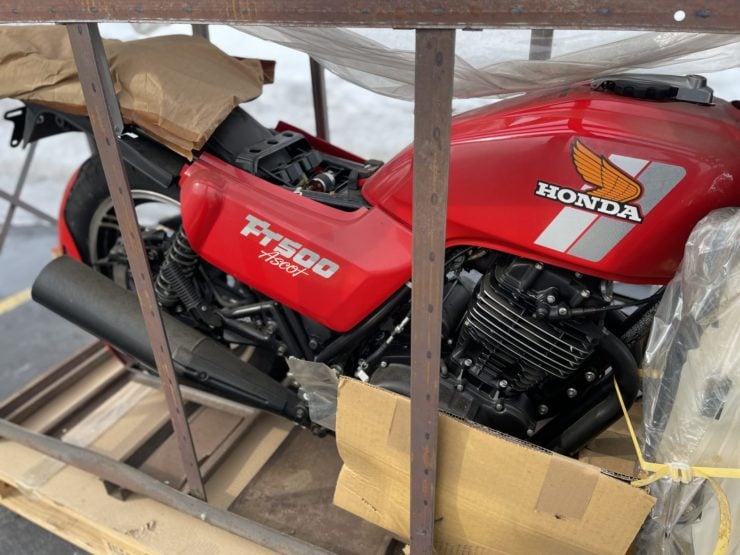

Despite all of its benefits the FT500 Ascot was a sales flop, it remained in production for 1982 and 1983 after which it was discontinued. Honda released the similar but V-twin engined VT500 in 1983 but it too was a sales flop, and by the end of 1984 the model family was gone forever.
In recent years both the SR500 and the FT500 have become popular retro bikes, sought after by those looking for lightweight vintage motorcycles with excellent reliability.
The 1982 Honda FT500 Ascot Shown Here
The motorcycle you see here is an unassembled 1982 Honda FT500 Ascot that’s still in the original factory crate. As mentioned above it was delivered to Northline Motorcycles of Houston, Texas but it never sold – as a result it has remained entombed for 40 years and counting.
It’s now being offered for sale by the current owner out of New York and it’s accompanied by a Honda Certificate of Origin and a bill of sale.
It will be up to the next owner whether to leave it in the crate and preserve it as-is, or uncrate it, assemble it and ride it.
If you’d like to read more about this Honda or register to bid you can click here to visit the listing on Bring A Trailer, where it’s being offered for sale in a live online auction with no reserve.
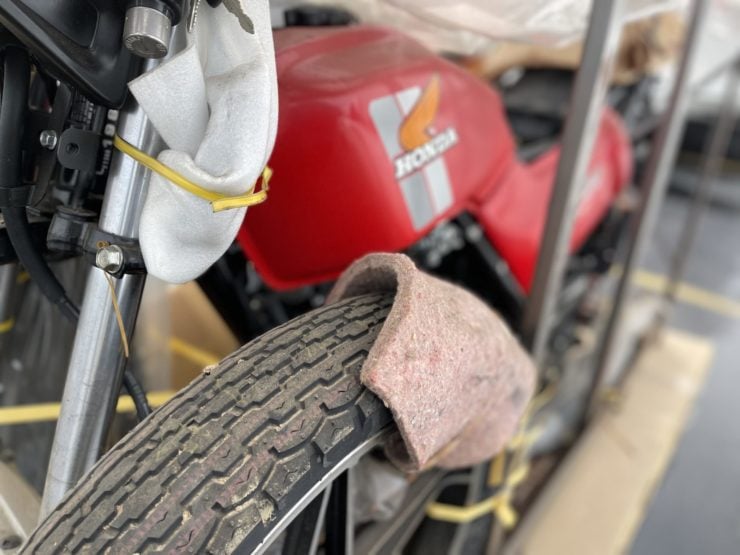
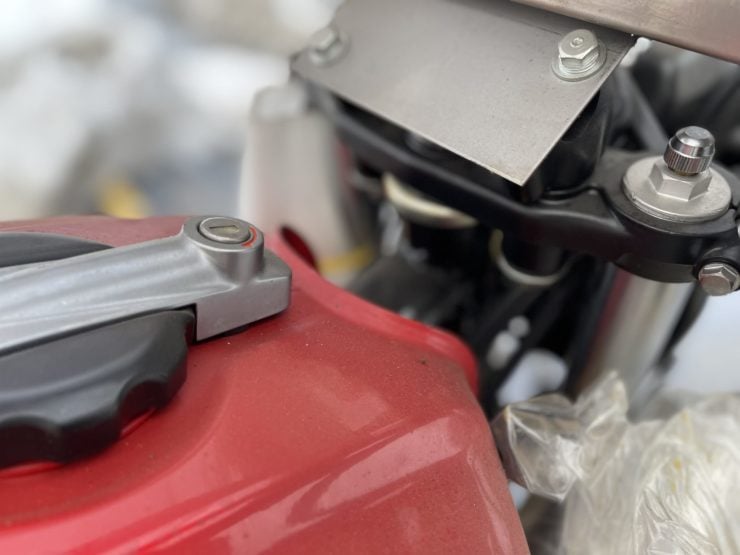
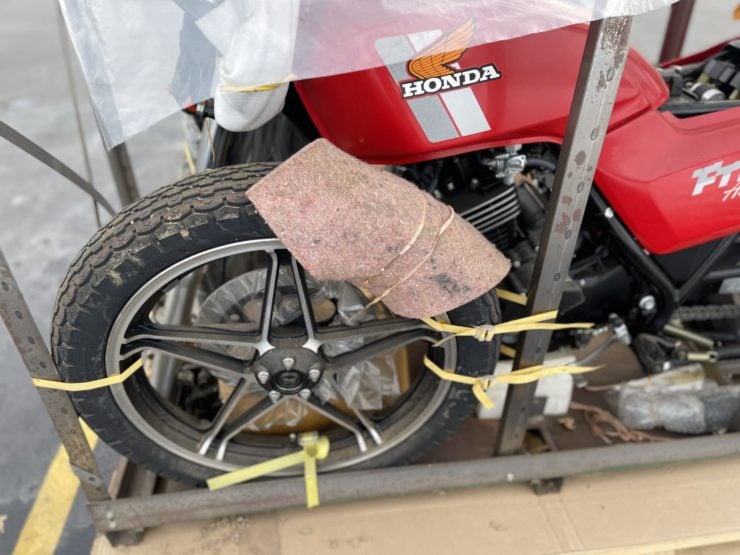
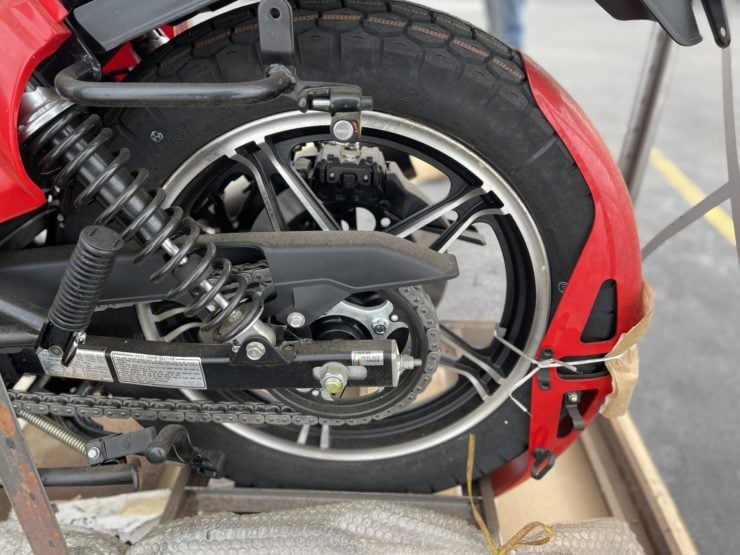
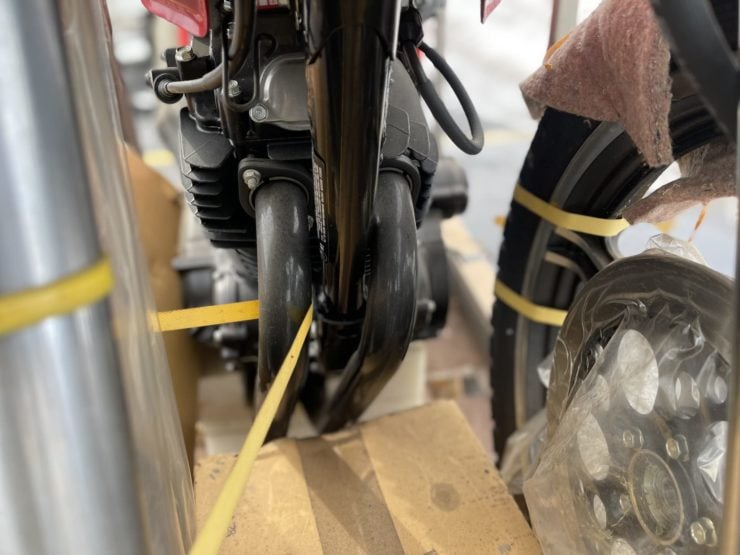
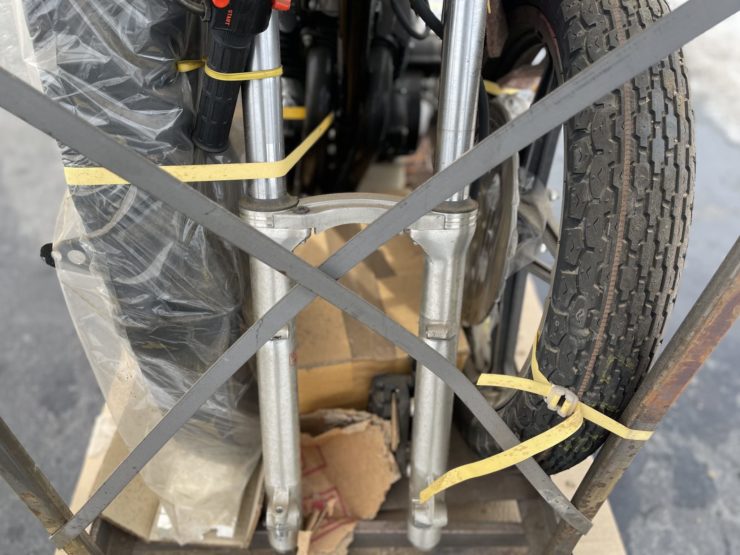
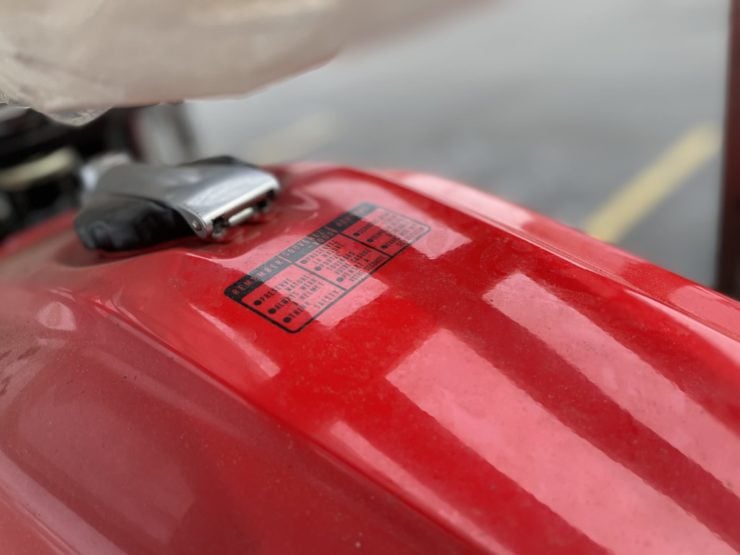
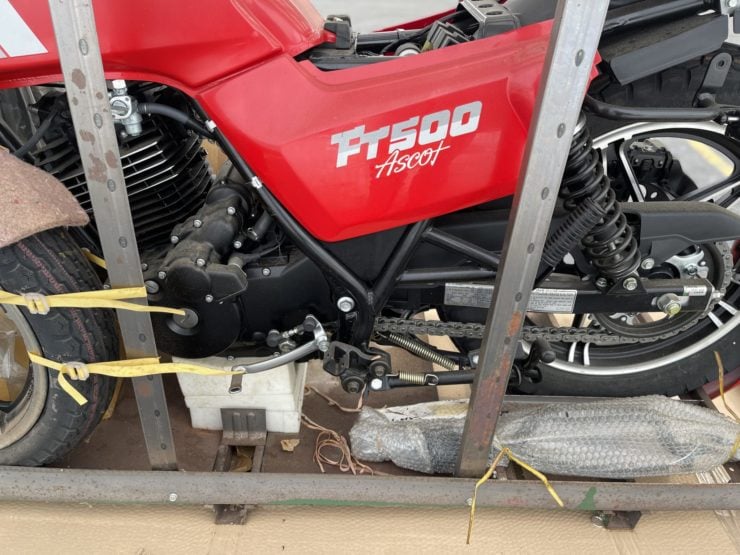
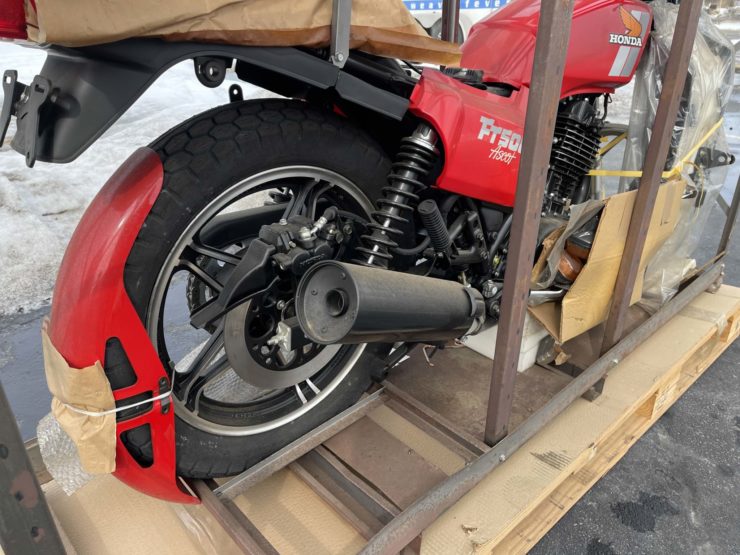
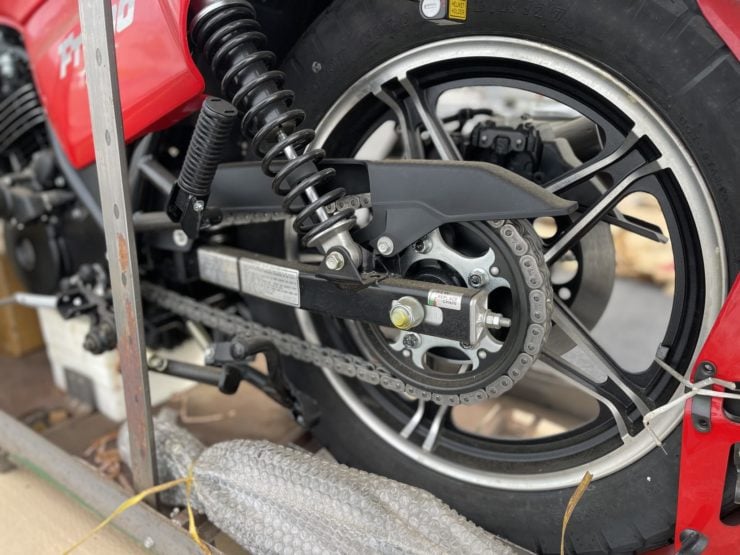
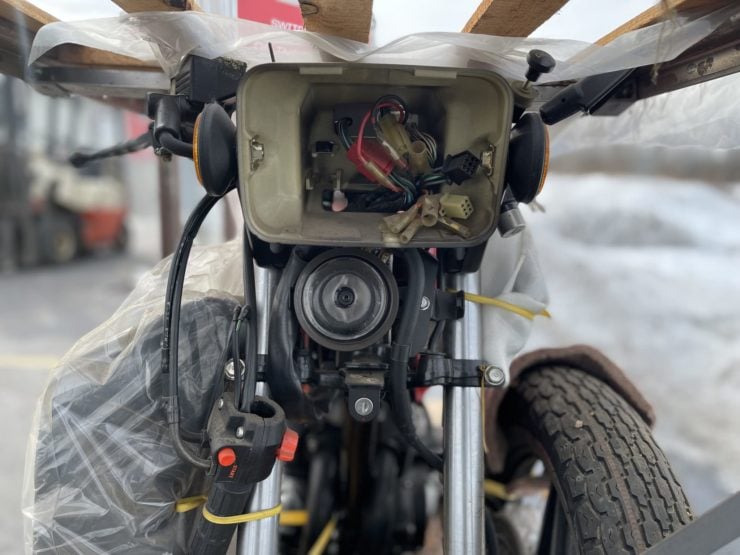
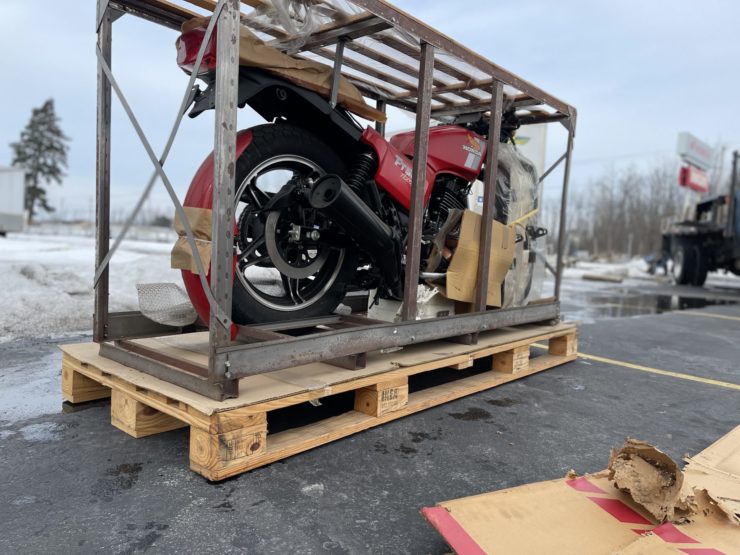
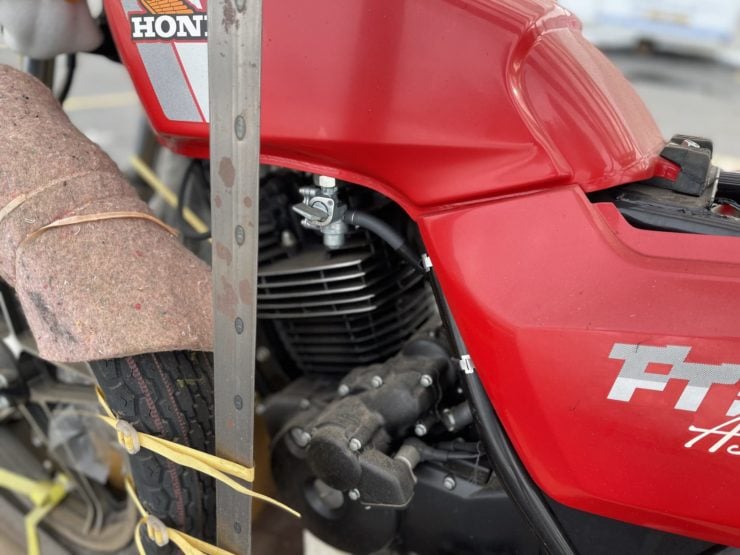

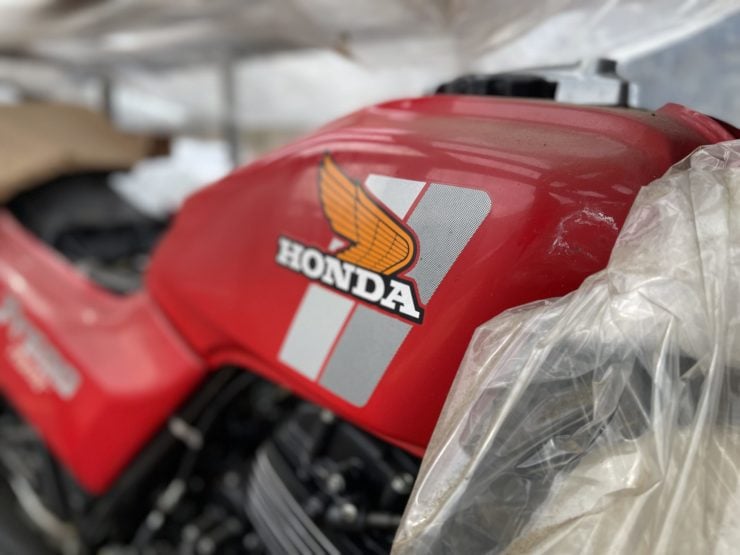


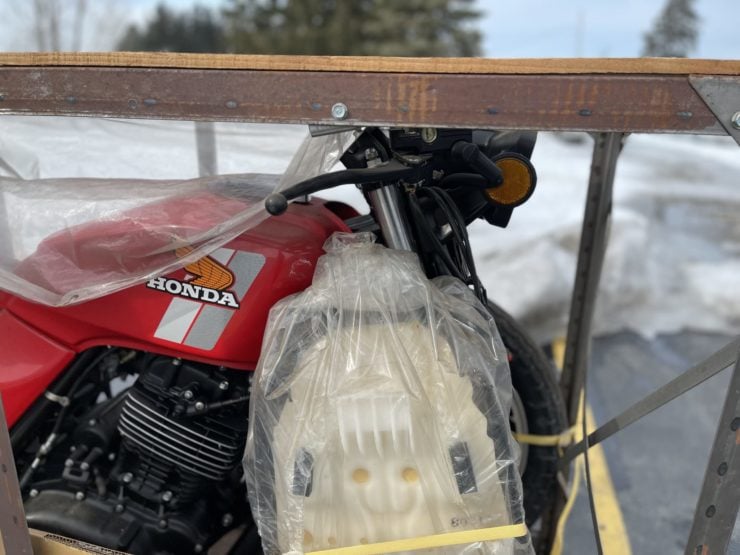
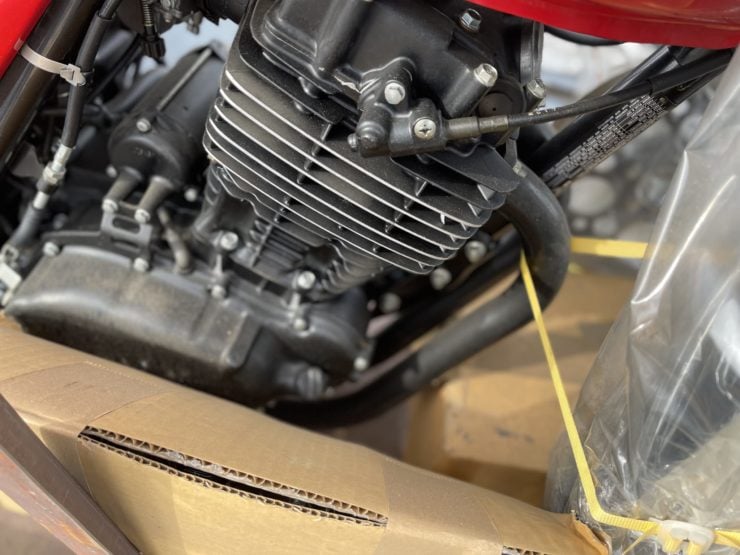
Images courtesy of Bring A Trailer

